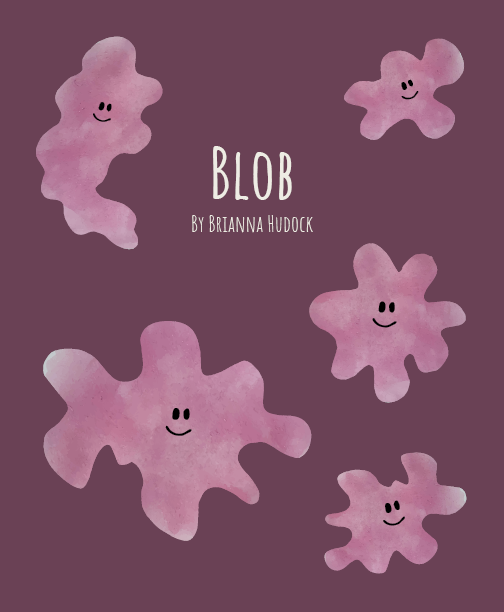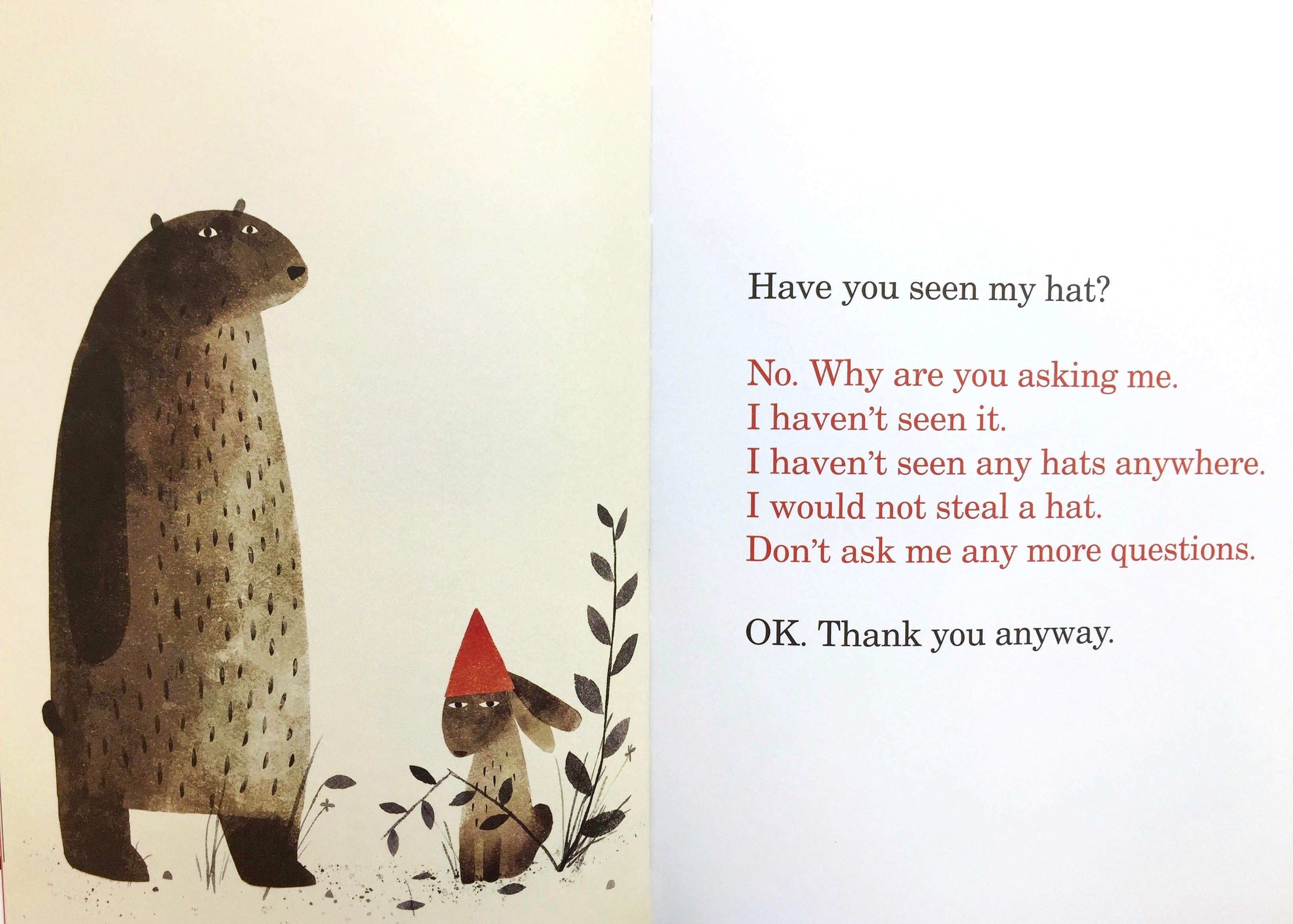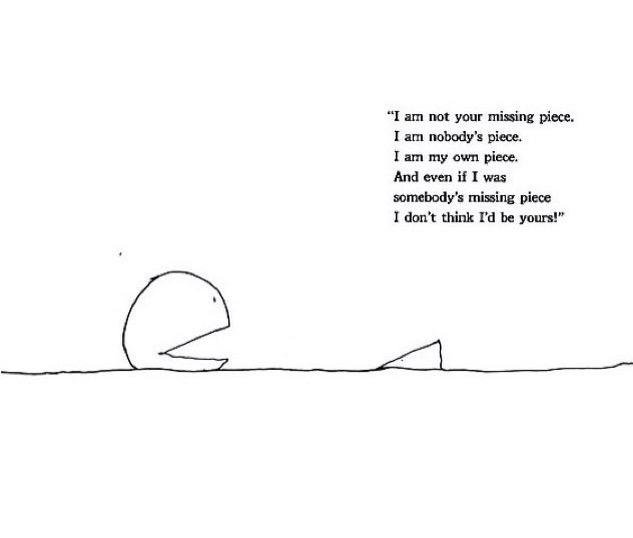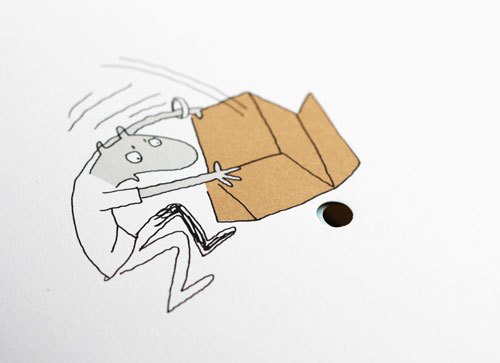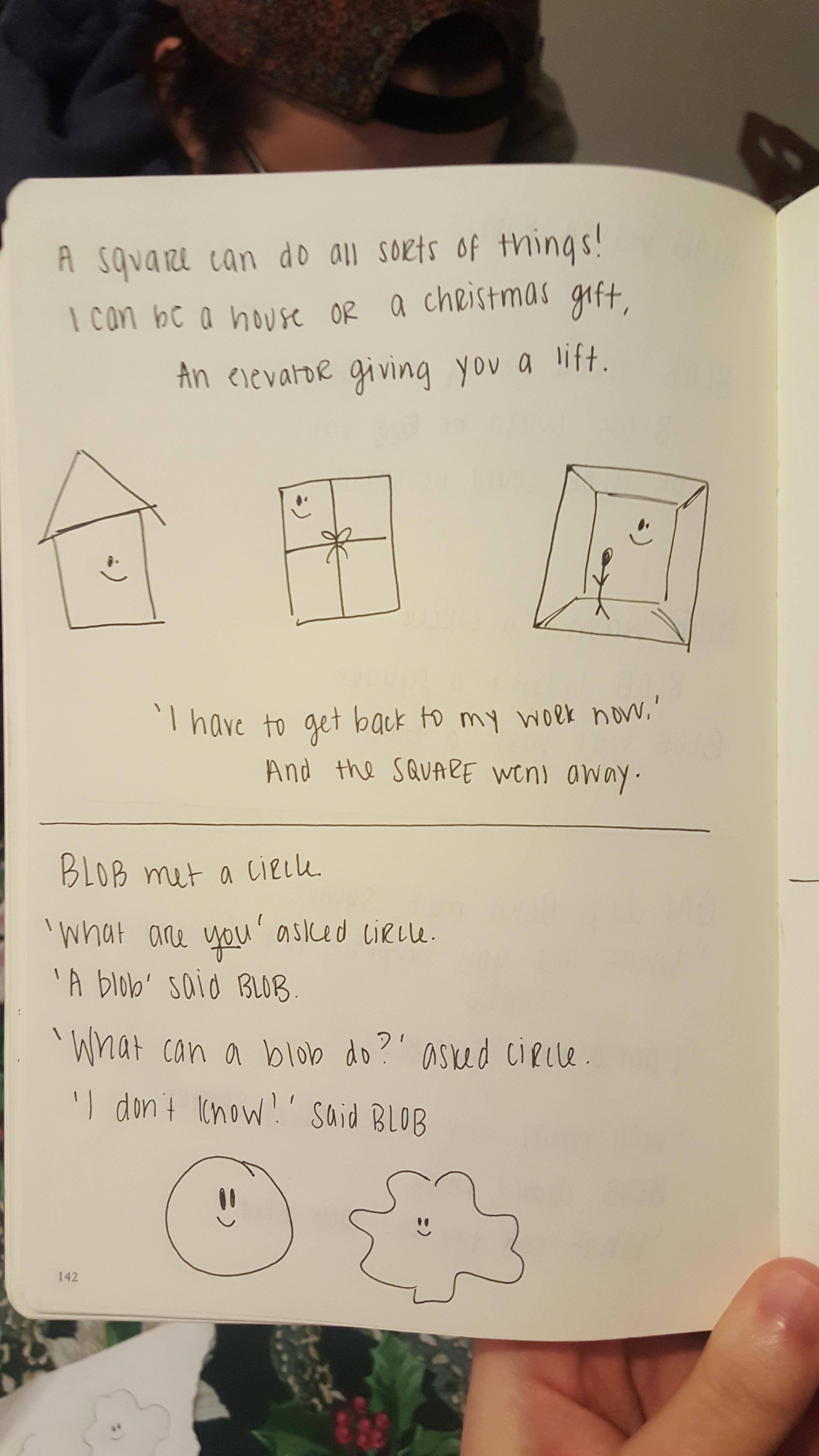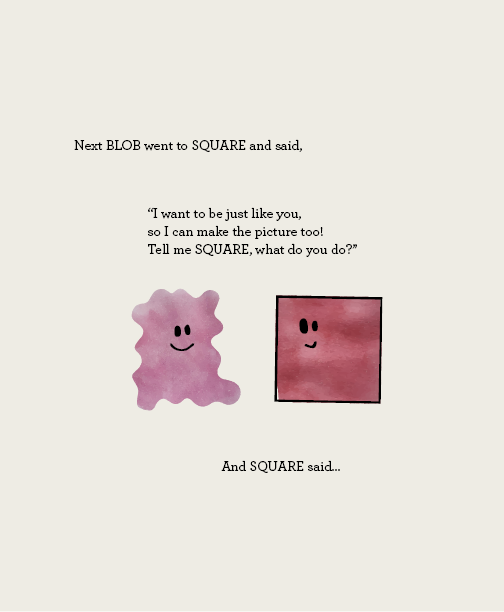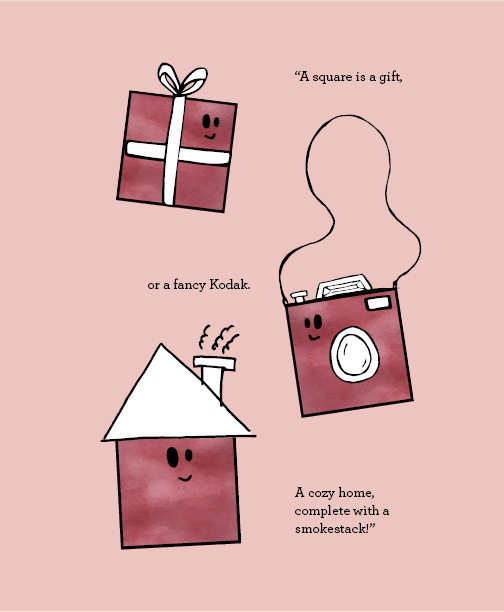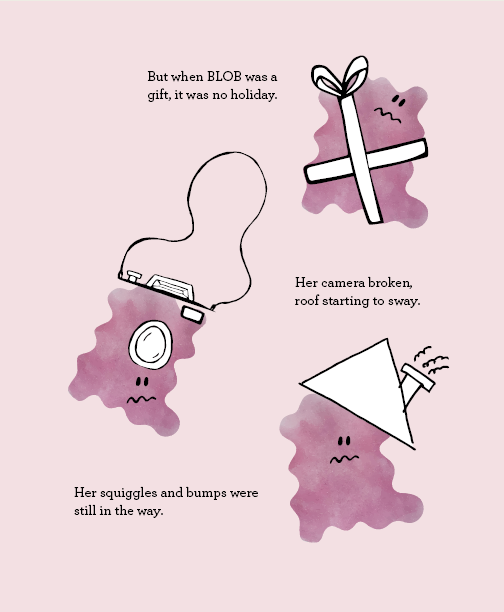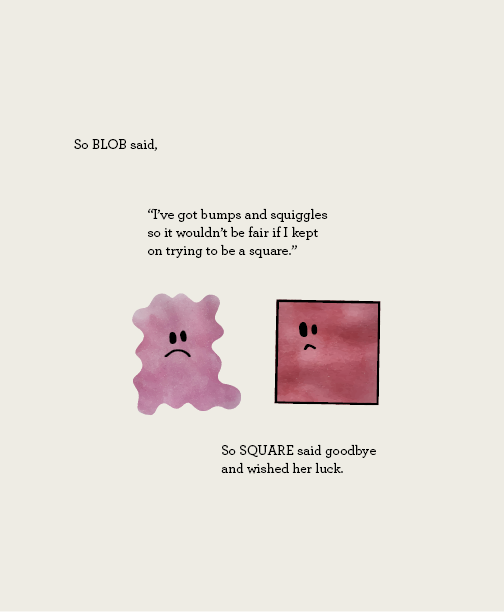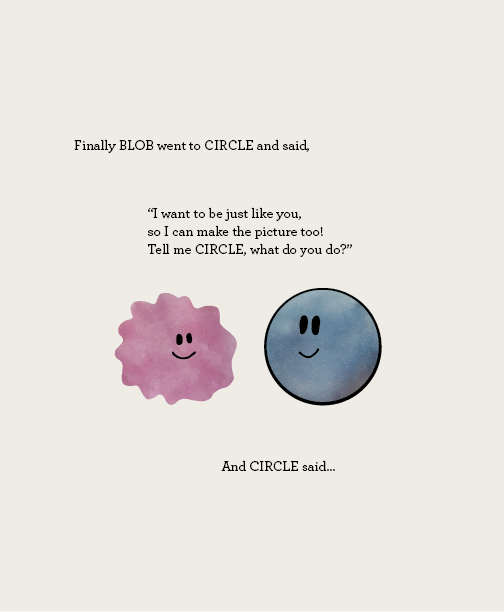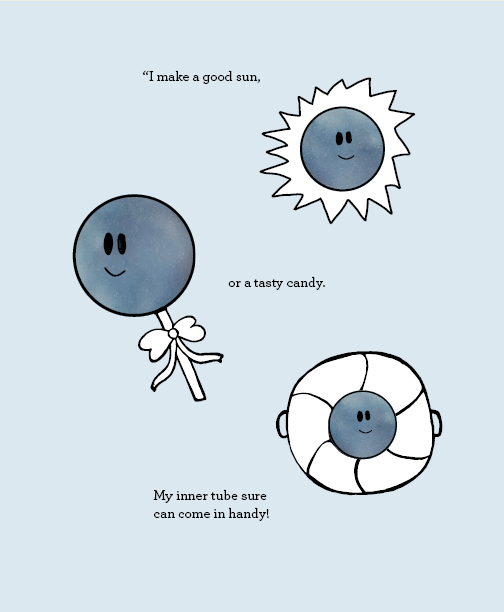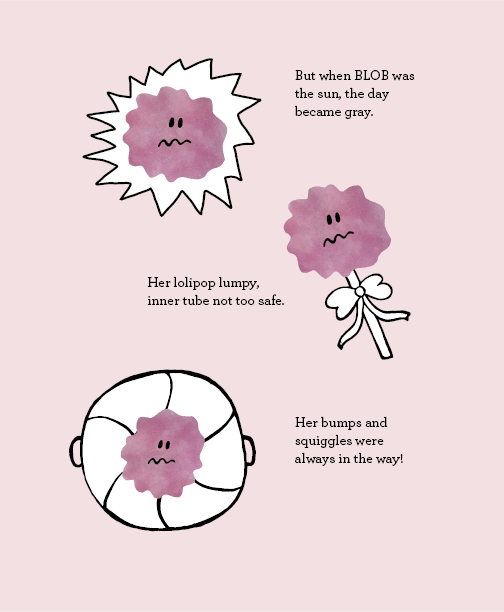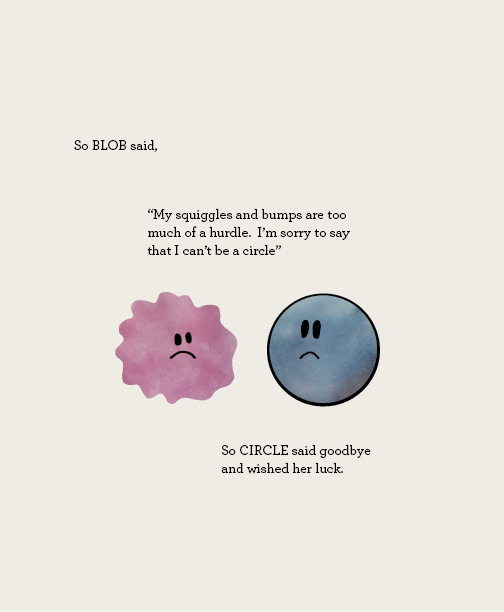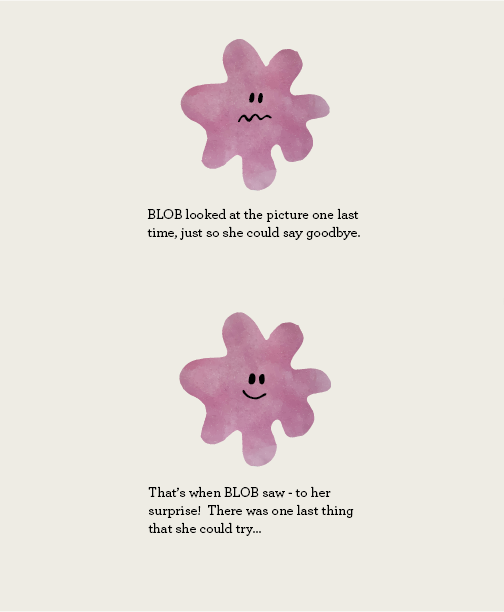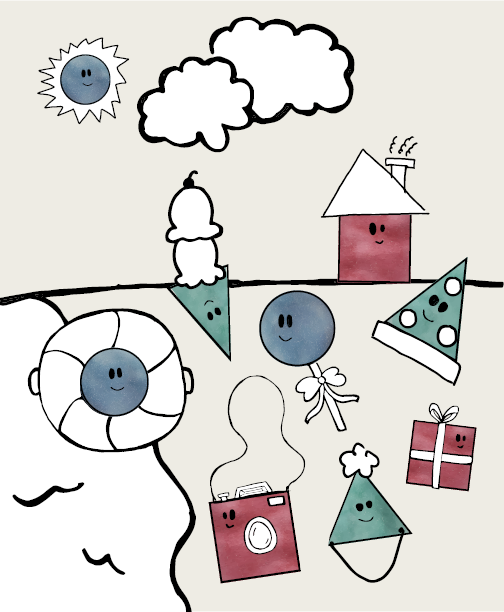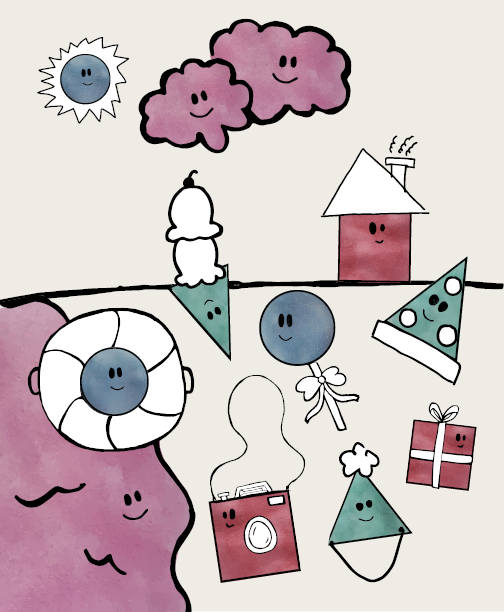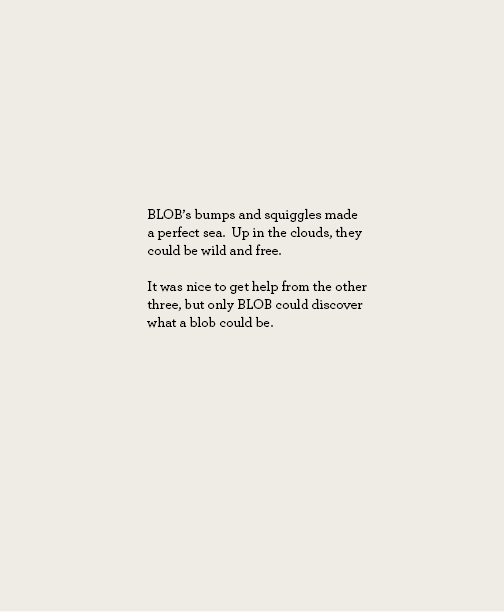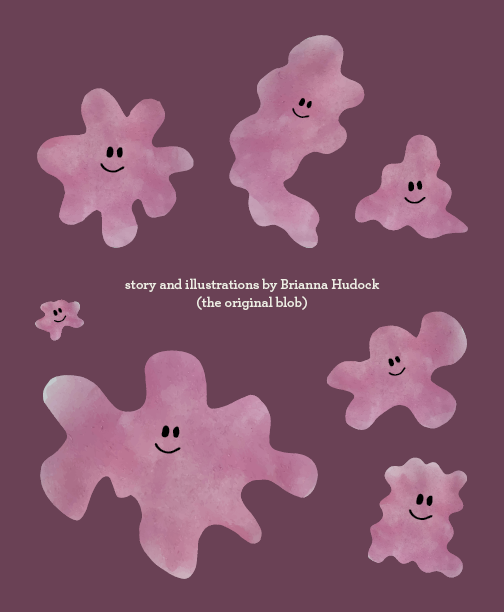projects
blob
I have a lot of experience reading to children. I was employed as a classroom helper by Carnegie Mellon's research preschool, worked as a camp counselor for five summers, and still babysit the youngest of my six younger siblings.
Bottom line: I have been exposed to a lot of mediocre children's picture books. So I decided to create my own from scratch.
The front cover of my book "Blob"
Background
I was most inspired by the work of Jon Klassen, Shel Silverstein, and Øyvind-Torseter.
John Klassen's illustrations are beautiful, utilizing simple shapes and magnificent colors and textures. His stories are very funny and often have dark twists that were hinted at in earier pages. He believes that it is important to remember how children are being read picture books because they cannot read the words on their own. Thus, children are relying on the pictures to tell the story. He likes to reward children who pay attention and think for themselves by putting clues to the story’s conclusion in the pictures, a lesson I ended up taking to heart.
John Klassen is a master of colors and textures
I also loved “The Missing Piece” by Shel Silverstein. The story followed a circle-esque character on a journey to find a shape that would fit into him and complete his circle. The main character’s desire was extremely simple and relatable despite the fact that the character was just a shape in this odd world of shapes. The images were extremely simple as well, just penned on a white background. What I loved about the story was that the theme of feeling incomplete was universally felt so the fact that the characters were simple shapes didn’t deter the reader from feeling empathy. I definitely ended up employing the theme of “shape goes through existential crisis and asks other shapes for help” in my own story.
"The Missing Piece" is powerfully simple
In the story “The Hole,” a character realizes there is a void he can’t get rid of and it's everywhere he goes, so the book has a literal hole punched through it. I was fascinated by the way this author combined the physicality of the book with its themes and illustrations. This inspired me to let the book’s pages become part of the story rather than just something onto which a story is told.
"The Hole" pushes the boundries of how to make a book
Process
This project was split into three major components. One part was writing the story itself. How would the characters talk, what were their names, what was the plot, how did it end, how do I fit it in less than 20 pages? My initial ideation can be found amongst my sketches where I brainstormed big plot ideas as well as wrote out some example pages.
Sketching helped determine scope of the story
The second component was the illustrations, such as what the characters looked like and any background or setting elements. In my sketches, I played around with the idea of BLOB being many different sizes and using color to differentiate how BLOB could become many different sizes while the shapes with fixed sizes were more perfectly colored in. I also played around with using shadows to show the shapes in more of a physical world which I ended up scrapping as I decided the shapes were in a two dimensional fantasy plane of existence.
playing with colors early lead to the addition of watercolor elements
The third element of the project and the one most relevant to the project requirements was overall composition of the book and its spreads/pages. In initial sketches I considered multiple different covers that showed BLOB in her many forms or surrounded by all the shapes and objects she encounters in her journey. I also started to play around with how the text on each page would relate to the illustrations. Here I realized I was going to have to fit a lot of text on some pages so I wanted to have some sort of grid system to allow me to chunk the text into readable, bite-sized pieces. I also realized that I wanted to be able to be playful with where I put my text which similarly supported a grid system. As I learned in earlier projects, playful text placement still requires guidelines so it doesn’t feel sloppy.
following a grid was essential to keep playfulness from feeling chaotic
Final Product
I received overwhelmingly positive comments at the final crit. People enjoyed the story, the typefaces and the illustrations and they seemed to appreciate the rhyming as well as the theme of the story itself. I made the story ultimately for me, feeling like a blob in a world of perfect shapes after radically changing my academic path during my senior year. My favorite part of this project was hearing from everyone, from my professor to my seven year old sister, that they related to blob too.
Read more about the process of creating Blob here.
next project
